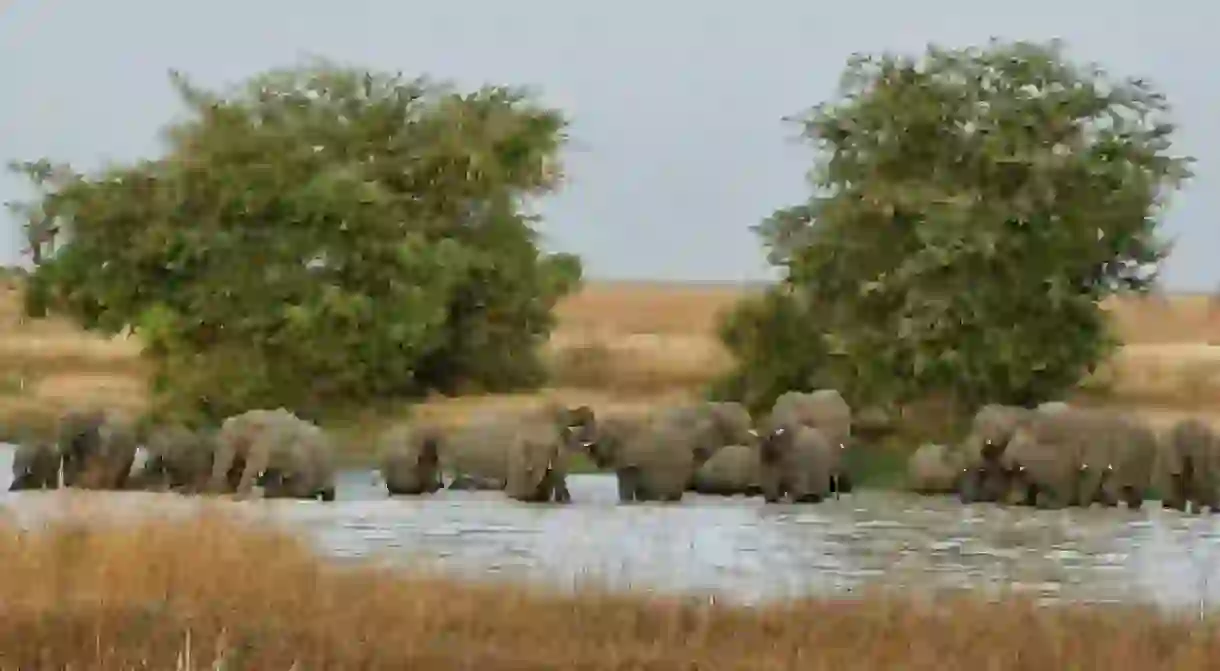10 Nature Reserves and Parks to Visit in Cameroon

The dense rainforest in the south and savannah in the north of Cameroon are home to abundant wildlife and rare plant species. Waza is one of Africa’s most popular safaris, but there are other trails in the jungle that will thrill you. Here is a roundup of 10 nature reserves and parks in Cameroon that are fascinating to explore.
Waza National Park
Natural Feature, Forest

Waza is found in the Far North Region of Cameroon where Sahel and savannah vegetation dominate. Visitors can spot lions, elephants, giraffes, hippos, elephants, hyenas, gazelles and cheetahs over an area that covers 1,700 square kilometres. Birds include the ostrich, geese, egrets and pelicans. You can board a flight to Maroua before a two-hour ride to the park.
Lobeke National Park
Forest, Natural Feature, Park

Lobeke is linked to Boumba Bek Park to its northeast, and both continue across the border to two other reserves in the Central African Republic and the Republic of Congo. The park has some of the highest concentrations of western lowland gorillas and forest elephants in Africa. Over a hundred fish species are found in waters around the area. There are 300 fish species and many reptiles in the park, which is home to the Baka people who hunt and gather food from the forest.
Korup National Park
Park, Natural Feature

Deep in the jungles of the Southwest Region, along the border with Nigeria is one of Cameroon’s most-visited parks. Wood cabins, rest rooms and a clear network of tracks ease movement around giant trees and thick undergrowth where visitors go to watch birds and primates. All visitors walk the suspension bridge to reach the park.
Benoue National Park
Natural Feature

The Benoue National Park is a UNESCO biosphere reserve in north-eastern Cameroon between Garoua and Ngaoundere. River Benoue to the east of the park is home to a colony of hippos and crocodiles. The park has a large bird population with over 300 species. Lions, hyenas, and antelopes are among many mammals that roam the park.
Dja Faunal Reserve
Park, Natural Feature, Forest

The Dja Faunal Reserve is one of the best protected forests in Africa. This sanctuary in the Congo Basin hosts a large population of gorillas, chimpanzees and elephants. The Dja River flows round most of the park on its way to the Republic of Congo, and acts as a natural barrier to poachers. With the exception of the Baka people who have lived in the forest for thousands of years hunting is banned on this UNESCO heritage reserve.
Nki National Park
Park, Forest, Natural Feature

Another reserve in the East Region of Cameroon which attracts a lot of interest with its biodiversity is Nki National Park. The park has over 250 species of birds and over 3,000 forest elephants, but has seen a rise in poaching in recent years. Chimpanzees, bushbucks, bush pigs, leopards, crocodiles and antelopes can be found in this rainforest that has trees over 50 metres tall
Faro National Park
Park, Forest, Natural Feature

The Faro National Park in Cameroon’s North Region has the largest colony of hippopotamus in Cameroon. Elephants, black rhinos, cheetahs, and hyenas also live in 3,300 square kilometres of savannah. The park is close to the border with Nigeria on the west, and on the eastern side is surrounded by several hunting reserves.
Bouba Njida National Park
Forest, Park, Natural Feature

This park is a savannah forest in the north of Cameroon with 23 species of antelopes and many elephants. The painted hunting dog, a critically endangered species, is closely monitored at the park by WWF.
Campo Ma'an National Park
Forest, Natural Feature, Park

Campo Ma’an reserve was created to counter the environmental impact of the Cameroon-Chad pipeline. Roads and paths inside the park make it easier to spot gorillas, mandrills, chimpanzees, elephants and African forest buffaloes. Its closeness to the port town of Kribi is perfect for visitors who want a taste of the urban and the wild. WWF is raising awareness about the impact of development, and collaborating with Cameroon to promote Campo Ma’an as an ecotourism destination. Cabins and shelters have been built for bird and animal watchers.
Limbe Wildlife Centre
Park, Zoo

Limbe Wildlife Centre specialises in the rescue of threatened wildlife and their rehabilitation into their natural habitat. Animals rescued from hunters and pet traders include a number of endangered species like the western lowland gorilla, the drill, preuss monkey and the African grey parrot. The centre receives over 50,000 visitors and educates 1,000 children every year on conservation. The area is full of other attractions like the Limbe Botanic Garden, Down Beach, Seme Beach Hotel and the Bimbia Slave Port.













